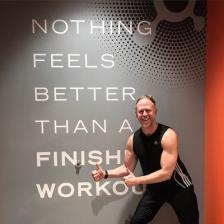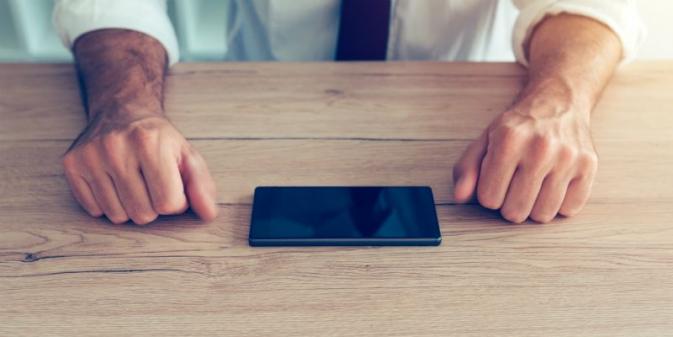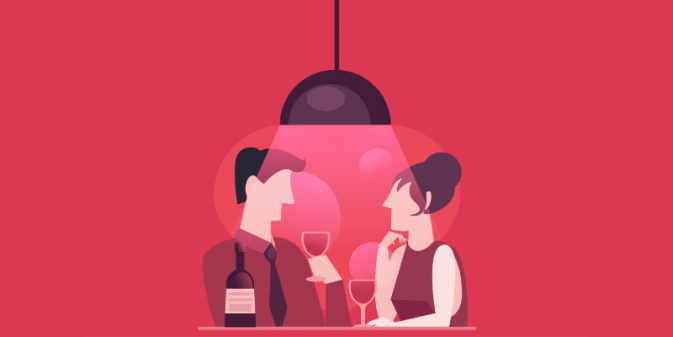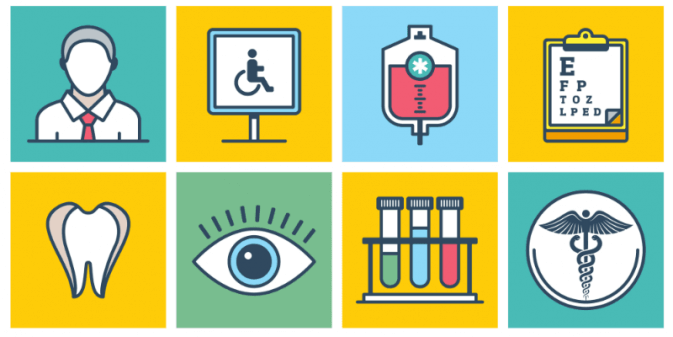
When you’re self-employed, you get perks that many traditional employees miss: Unlimited vacation and sick days, flex time, tax deductions, and perhaps the ability to work from any location. These are just a few upsides of being your own boss.
Whether you have a part-time side gig or run a small business full-time, enjoying the entrepreneur lifestyle may be a huge reason you want to work for yourself. But a major downside to all this freedom is not getting a cushy benefits package, which most employers offer.
In this post, you’ll learn how to create your own self-employed benefits program, which is probably easier than you think. Plus, I’ll answer several related questions from Money Girl readers and listeners about working for yourself.
5 Ways to Create Your Own Self-Employed Benefits Package
- Buy Individual Health Insurance.
- Use a Health Savings Account (HSA).
- Get a Term Life Insurance Policy.
- Never Forget About Disability Insurance.
- Contribute to a Tax-advantaged Retirement Account.
Here’s what you need to know about these tips to creating benefits that protect your personal finances, cut taxes, and reduce the risk of being an entrepreneur.
1. Buy Individual Health Insurance
If you’ve made the leap from a corporate job to being self-employed, the first benefit you’re likely to miss is health insurance. Group plans cost much less than an individual policy; plus, your employer may have subsidized all or some of your premium.
If you have a spouse or domestic partner with group health benefits, you can become a dependent on his or her policy. But if you’re single or have a partner who’s also self-employed, start shopping.
Remember that not having qualified health insurance is illegal and comes with a tax penalty if you’re uninsured for more than two consecutive months.
If you left a group plan, you’re typically entitled to COBRA coverage. It stands for Consolidated Omnibus Budget Reconciliation Act, which is a law that allows you to continue employer-sponsored health plan for a limited time after you’re no longer employed. It gives you the same medical benefits and choices you had before you left your company, including health, dental, and vision insurance, for up to 18 months in most cases.
Problem is, you’re charged the full cost of COBRA health premiums, which can be much higher than what you previously paid as an employee. So, consider all your options, such as enrolling in a spouse’s plan, a parent’s plan (if you’re younger than age 26), or shopping for an individual plan.
Remember that not having qualified health insurance is illegal and comes with a tax penalty if you’re uninsured for more than two consecutive months. However, according to recent tax reform, starting in 2019, the penalty for being uninsured, or for having a subpar health plan, won’t be enforced.
Question: An anonymous reader asks, “How do I find affordable health insurance if I decide to leave my job to do freelance work full time?”
Answer: Depending on your income and family size, you may be eligible for a subsidy that reduces the cost of coverage. If you have low income, you may qualify for free or low-cost coverage from Medicaid or the Children’s Health Insurance Program (CHIP). Being eligible for COBRA doesn’t affect your eligibility for any type of federal assistance.
One option to reduce the cost of health insurance is to choose a high-deductible plan. These allow you to make contributions to a health saving account (HSA), which you can spend tax-free on many different qualified medical expenses. I’ll tell you more about HSAs in a moment.
You can purchase health insurance from a variety of places, including:
- Local health insurance agents or brokers
- Health insurance carriers, such as Cigna and USAA
- Online insurance quote aggregators, such as eHealth Insurance and Get Your Insurance Quote
- Federal insurance marketplace, healthcare.gov
There’s no denying that health insurance is expensive—but it pales when compared to the potentially massive medical bills you could face after getting into an accident or being diagnosed with a major illness. So, make getting good health coverage a top priority when you’re self-employed.
2. Use a Health Savings Account (HSA)
With many types of insurance policies, a strategy to cut premiums and save money is to raise your deductible. A deductible is the amount you must pay first before your benefits kick in.
When you choose a high-deductible health plan, not only do you pay lower premiums, but you’re also allowed to contribute to a health savings account (HSA).
With health insurance, if you’re in relatively good health, a high-deductible plan can make sense. But the downside is that if you do get sick, you’ll have to pay more out-of-pocket before your payouts for covered claims begin. So, a high-deductive health plan works in your favor when you need limited medical care and aren't likely to spend the full deductible each year.
When you choose a high-deductible health plan, not only do you pay lower premiums, but you’re also allowed to contribute to a health savings account (HSA). You can have an HSA if you get your qualified plan on the open market as an individual, or through a group plan at work.
Contributions to an HSA are deductible on your tax return, which reduces your tax liability, even if you don’t itemize deductions. Your funds can earn interest or be invested for potential growth. And when you take distributions to pay for qualified medical expenses—such as doctor co-pays, prescriptions, eyeglasses, and supplies—your contributions and earnings are completely tax-free.
You can also use HSA funds for a long list of expenses, even if you don’t have insurance for them, such as going to a dentist, ophthalmologist, chiropractor, or psychologist. But if you spend HSA money on non-qualified medical expenses, the amount will be taxed as income, plus you’re subject to a 20% tax penalty.
However, if you reach age 65 and still have money in an HSA, the penalty doesn’t apply. In other words, if you spend it on non-qualified expenses, like a trip to Hawaii, it would simply be subject to income tax. This makes an HSA an additional retirement account if you own it long enough.
No matter where you get your health insurance, you always own and manage an HSA as an individual. That means you don’t need permission from an employer or the IRS to set one up and it stays with you even if you change jobs or become unemployed.
For 2018, if you have health coverage just for yourself, you can contribute up to $3,450 to an HSA. If you have family coverage, you can contribute up to $6,900.
There’s also a “catch up” policy that allows you to contribute an extra $1,000 to either type of policy, if you’re age 55 or older. You can make contributions at any time, even up to April 15 for the previous tax year, but you’re never required to make contributions.
Question: A podcast listener named Shannon says, “I really learn a lot from you. What are the top places to open a HSA account?”
Answer: If you qualify for an HSA, it’s easy to open one up at institutions such as Lively HSA and HSA Bank.
See also: HSA Rules After Leaving a High-Deductible Health Plan
3. Get a Term Life Insurance Policy
Many employers offer life insurance—but you typically lose it when you leave the company. The good news is that if you’re in relatively good health, finding affordable life insurance is probably easier and less expensive than you think.
So, if anyone depends on you or would be hurt financially if you weren’t around, such as children, a spouse, partner, or aging parents, you need life insurance.
First, consider if you need a life policy. You’ll never get to enjoy it because the payout goes to your beneficiaries after you die. The purpose is to give you and your loved-ones peace of mind that your financial life will be okay even after an unexpected, deadly tragedy.
So, if anyone depends on you or would be hurt financially if you weren’t around, such as children, a spouse, partner, or aging parents, you need life insurance. There are different types, such as term life and permanent life, depending on your financial goals.
- Term life insurance provides a benefit upon the death of the policy owner for a set period, such as 10 or 20 years. I prefer term insurance because it’s inexpensive and gives you the most benefit for the dollar.
- Permanent life insurance includes a variety of products such as whole life, universal life, and variable life. I won’t get into the details on each of those, but they provide a death benefit and an investment all wrapped up in one. They’re also called permanent life policies because you get lifetime coverage.
Life insurance coverage is more affordable than most people think. For example, if you're in your 30s with relatively good health, your premium for a 20-year, $500,000 term policy would be about $200 per year. You can shop and compare term life quotes at sites like Haven Life, Liberty Mutual, and USAA.
Even if you do get a policy through work, it’s usually only one or two times your annual salary, which is typically not enough for individuals with a spouse and children. Aim to have coverage that’s at least 10 times your annual salary using one or more policies.
Life insurance can’t make you immune to a tragedy, but it should be a pillar of your personal finances. If you want to live life more confidently, it’s critical to protect your assets and support your loves ones with life insurance coverage.
4. Don’t Forget About Disability Insurance
Disability insurance is another coverage you typically get on an employer-provided benefits menu, but is canceled when you leave the company. It’s often overlooked by the self-employed, but is very important.
Did you know that you’re more likely to suffer a disability than you are to die before the age of 65?
Did you know that you’re more likely to suffer a disability than you are to die before the age of 65? And when a long-term disability occurs, the average absence from work is 2½ years.
Remember that health insurance only pays a portion of your medical bills; it doesn’t pay your living expenses, like housing or food, if you can’t earn money for an extended period. A disability policy pays a percentage of your gross income, such as 60% or 70%, if you can’t work due to a disability, illness, or accident.
Not being well enough to work could cause a major financial strain for you or family members who depend on your income. Social Security is only available after you’ve been out of work for a year and are completely disabled. You may be entitled to worker’s compensation insurance, if you suffer from a work-related injury.
Question: A podcast listener named Alexis says, “I’m a big fan of the show! My husband is a carpenter and we both have health insurance in California through my work. Is there additional insurance we should purchase since he works with tools and machinery, or is regular health insurance sufficient?”
Answer: I always recommend having a disability policy—but especially if your work makes you inherently prone to injuries. Several states, including California, offer a disability program for workers who pay into the system through payroll deductions.
If you’re self-employed, you can elect to pay state disability premiums, which may be less expensive than a private policy. Shop both options to find coverage that makes sense for your work and financial situation. Check out companies including MetLife, State Farm, and Mutual of Omaha.
5. Contribute to a Tax-advantaged Retirement Account
Another essential benefit you’ll need to handle on your own after becoming self-employed is contributing to a retirement account. There are great options to invest for the future, even when you don’t have a traditional day job with a 401k.
There are great options to invest for the future, even when you don’t have a traditional day job with a 401k.
Question: A member of Dominate Your Dollars, my private Facebook group, named Kate Haas asks, “I have multiple part-time jobs as a self-employed independent contractor. What are my best options for retirement?”
Answer: Here’s a summary of four different types of tax-advantaged retirement accounts to consider when you work for yourself.
1. Traditional IRA (Individual Retirement Arrangement). For anyone with earned income under the age of 70½. Even non-working spouses who file taxes jointly with a working spouse qualify for a spousal IRA.
Contributions are tax-deductible, which means they reduce the amount of income on which you pay tax. The only downside is that if you or a spouse also participate in a workplace retirement plan (like a 401k or 403b) some or all your contributions to a traditional IRA may not be tax deductible. Another negative is that IRAs have low annual contribution limits compared to other retirement options for the self-employed. For 2018, you can contribute up to $5,500, or $6,500 if you’re age 50 or older.
Additionally, if you take money out of a traditional IRA before age 59½, you’re subject to income tax plus an additional 10% early withdrawal penalty.
See also: 10 IRA Facts Everyone Should Know
2. Roth IRA. For anyone with earned income up to certain limits, no matter your age.
Contributions are taxed up front, but withdrawals during retirement are completely tax free. That allows you to avoid paying tax on decades of earnings and growth in a Roth.
You get the full tax benefit even if you or a spouse participate in a retirement plan at work. Additionally, you have more flexibility to withdraw Roth IRA contributions (but not the earnings portion) before retirement without triggering tax or penalties if you’re younger than age 59½.
For 2018, you can contribute up to $5,500, or $6,500 if you’re age 50 or older. That’s the total limit for all IRAs. For example, you could contribute $2,000 to a traditional IRA and $3,500 to a Roth IRA in the same year, but not $5,500 to both types of IRAs.
3. SEP-IRA. A traditional IRA for anyone who is self-employed without or with employees, no matter if you’re set up as a sole proprietor, partnership, or a corporation. It stands for Simplified Employee Pension and is one of my favorite plans because it’s easy and inexpensive to administer.
For 2018, you can make SEP-IRA contributions for each of your employees (including yourself) up to 25% of compensation for a maximum of $55,000.
With a SEP-IRA, contributions can only come from an employer—your employees can never contribute their own money. So, as the business owner, you choose the amount to contribute each year.
For example, let’s say you have a small web design business with one employee named Jose. If you choose to have the company contribute 10% of your income to your own SEP-IRA, you’d also have to contribute 10% of Jose’s pay to his SEP-IRA.
For 2018, you can make SEP-IRA contributions for each of your employees (including yourself) up to 25% of compensation for a maximum of $55,000. You can also max out other accounts, including a traditional or Roth IRA and a retirement plan with another employer, such as a 401k or 403b.
But if you have a bad year with little profit, you can choose not to make any contributions to your SEP-IRA. Employees are always vested in their account, which means if Jose leaves your employment, he can take his retirement money with him.
Just like with a traditional IRA, if you or your employees take money out of a SEP-IRA before age 59½, you’re subject to income tax plus an additional 10% early withdrawal penalty.
See also: 401k or IRA--Which One Should You Invest in First?
4. Solo 401k. A traditional 401k or Roth 401k for anyone who is self-employed with no employees, other than a spouse. As both the employer and employee in your business, you can make both kinds of contributions to a one-participant 401k account.
This arrangement allows to you contribute more with a solo 401k than any other type of retirement account. Unlike a Roth IRA that imposes income limits, you can contribute to a Roth solo 401k no matter how much you earn.
For 2018, on the employee side of a solo 401k, you can contribute as much as 100% of your salary up to $18,500 or up to $24,500 if you’re 50 or older. Plus, as the employer, you can contribute up to 25% of compensation, if your total contributions don’t exceed $55,000, or $61,000 if you’re age 50 or older.
Be aware that if your business is a side gig, such as doing freelance writing or weekend photography, and you also participate in a 401k as an employee at another company, the total employee contribution you can make to both plans is $18,500 or $24,500 if you’re age 50 or older.
You can also have a solo 401k in addition to a traditional IRA or a Roth IRA. However, depending on your income and tax filing status some or all your contributions to a traditional IRA may not be tax deductible.
If you need help setting up a retirement plan or aren’t sure how to use multiple retirement plans properly, be sure to contact a qualified tax accountant. Paying a professional to help you maximize tax benefits for your business and retirement accounts will pay off.
The bottom line is that you don’t need to work in a traditional job to enjoy a great benefits package. In fact, when you create your own, you can customize it any way you like.
Do your homework, shop around, and factor the costs of self-employed benefits into your business. Don’t let benefits be a stumbling block to creating your own venture and living your dream of becoming an entrepreneur.
See also: Can You Contribute to Both a 401k and an IRA in the Same Year?
Get More Money Girl!
If you set a resolution to get out of debt this year, awesome! Now it's time to actually learn how to do it. Don't miss Laura's new online class Get Out of Debt Fast--A Proven Plan to Stay Debt-Free Forever. Enroll with an 85% discount for a limited time when you click here to learn more!
If you're ready for help managing debt, building credit, and reaching big financial goals, check out Laura's private Facebook Group, Dominate Your Dollars! Request an invitation to join this growing community of like-minded people who want to take their financial lives to the next level.
To connect on social media, you’ll find Money Girl on Facebook, Twitter, and Google+. Also, if you’re not already subscribed to the Money Girl podcast on Apple Podcasts or the Stitcher app, both are free and make sure that you’ll get each new weekly episode as soon as it’s published on the web. The show is also on the Spotify mobile app! Click here to sign up for the free Money Girl Newsletter!
Download FREE chapters of Money Girl’s Smart Moves to Grow Rich
Smiling Young Woman image courtesy of Shutterstock

 Then we hustled (well, some of us hustled) over to the weight area of the gym and started the next phase of the workout which consisted of:
Then we hustled (well, some of us hustled) over to the weight area of the gym and started the next phase of the workout which consisted of:
 In Southern California, an estimated
In Southern California, an estimated 






